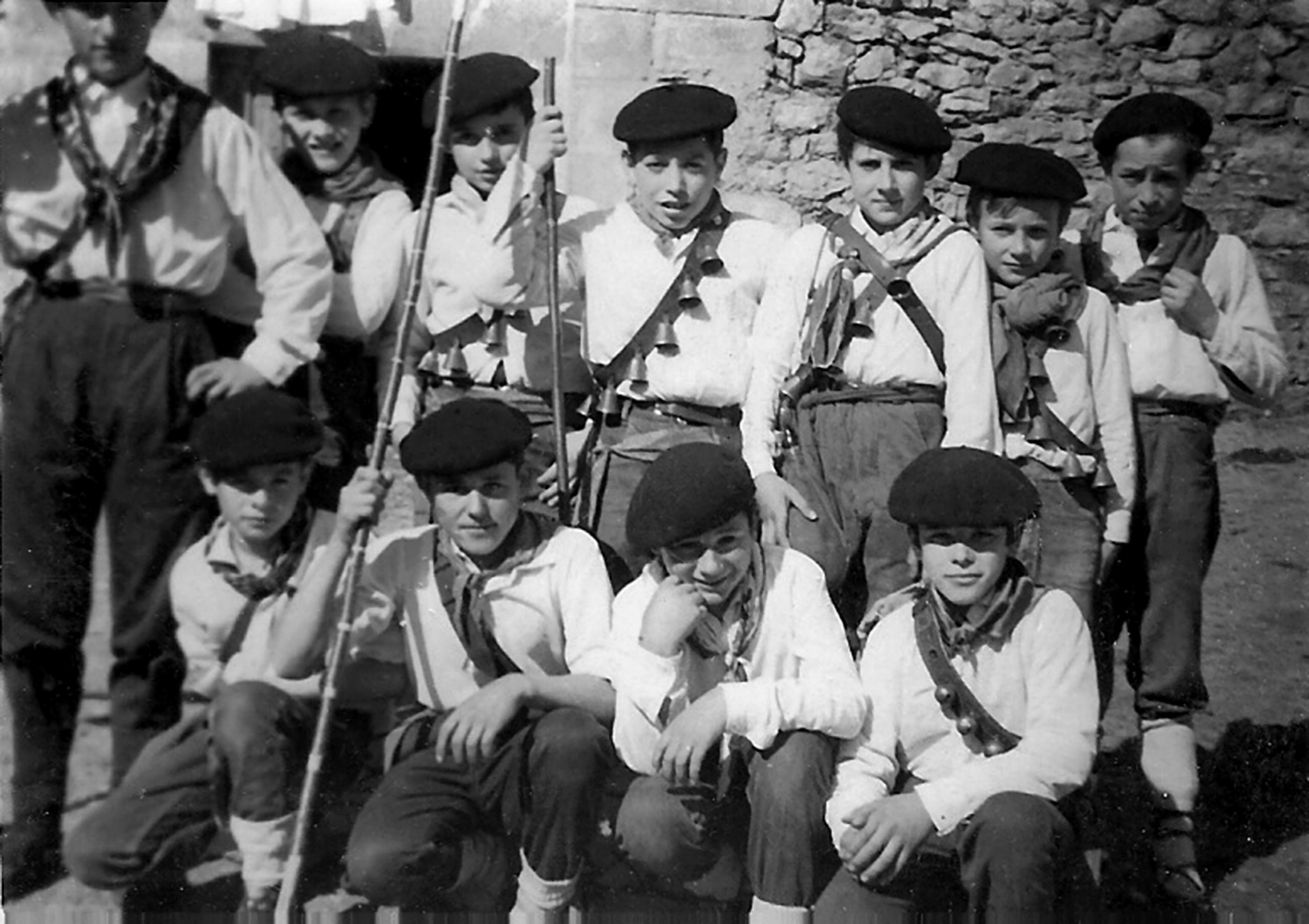Basque ethnography at a glance

Marzas singers from the neighbourhood of Matienzo in the Valley of Carranza (Bizkaia) in the mid-1960s. Courtesy of Miguel Sabino Díaz.
Located in the westernmost end of the district of Encartaciones in Bizkaia, the wedge-shaped Valley of Carranza is bounded by the autonomous community of Cantabria and the Merindades of Castile. It is the last tract of Basque land to see the sun set and the first to feel the rain fall when storms arrive. The vastness of the Valley together with its centuries-old isolation might perhaps have contributed to the development of a strong cultural identity.
Peripheries are often culturally richer than the centre. As it happens, border territories are to culture what ecotones to biodiversity: areas of environmental transition where two ecological communities meet, known as ecotones, are fertile grounds for the formation of new species and thus exhibit greater biodiversity.
A somewhat ironic example may help to further understand the point. Livestock farming, mainly dairy cattle, is the prime occupation for residents in the Valley. Becerras and becerros are traditional names for heifers and bull calves, respectively; old folk, however, are well acquainted with their Basque counterparts chalas, and curiously enough, chalos, as well as the Cantabrian alternatives jatas and jatos; and yet it is the standard Spanish forms terneras and terneros that are dominant now, the substituted words having been largely relegated to the back of the book.
Far from devoting ourselves to the study of our cultural traits, some of them of Basque and Cantabrian origin, attitudes of disrespect for all things Cantabrian have developed in recent decades, and contrarily, we make customs of remote regions in the Basque Country our own, a most hurtful instance being the abandonment of the singing of the Marzas to welcome in the spring, traditionally on 1 March, a true cultural jewel if there ever was one. Present in the memory of all locals over the age of fifty, the festival disappeared years ago, among other diverse and complex reasons, because the songs sounded Cantabrian.
The incorporation of new elements is enriching for the cultural heritage of our community, but it is sad to see that as new living expressions are adopted, some of the characteristics that define us are being neglected.
Whilst other communities insist on recovering forgotten traditions and sharing those practised elsewhere, we seem to be giving up our own: the Marzas, the Pascuas, Romance verses sang in the eve of St Agatha’s Day… Such hostile attitudes about our culture might be due to the fact that we tend to think of ourselves as second-class Basques and are therefore inclined to embrace cultural stereotypes, which is tantamount to denying the enormous ethnographic wealth of the Basque Country.
Luis Manuel Peña – Ethnography Department – Labayru Fundazioa
Translated by Jaione Bilbao – Ethnography Department – Labayru Fundazioa
See a previous post by Miguel Sabino Díaz for further information about the Marzas.

